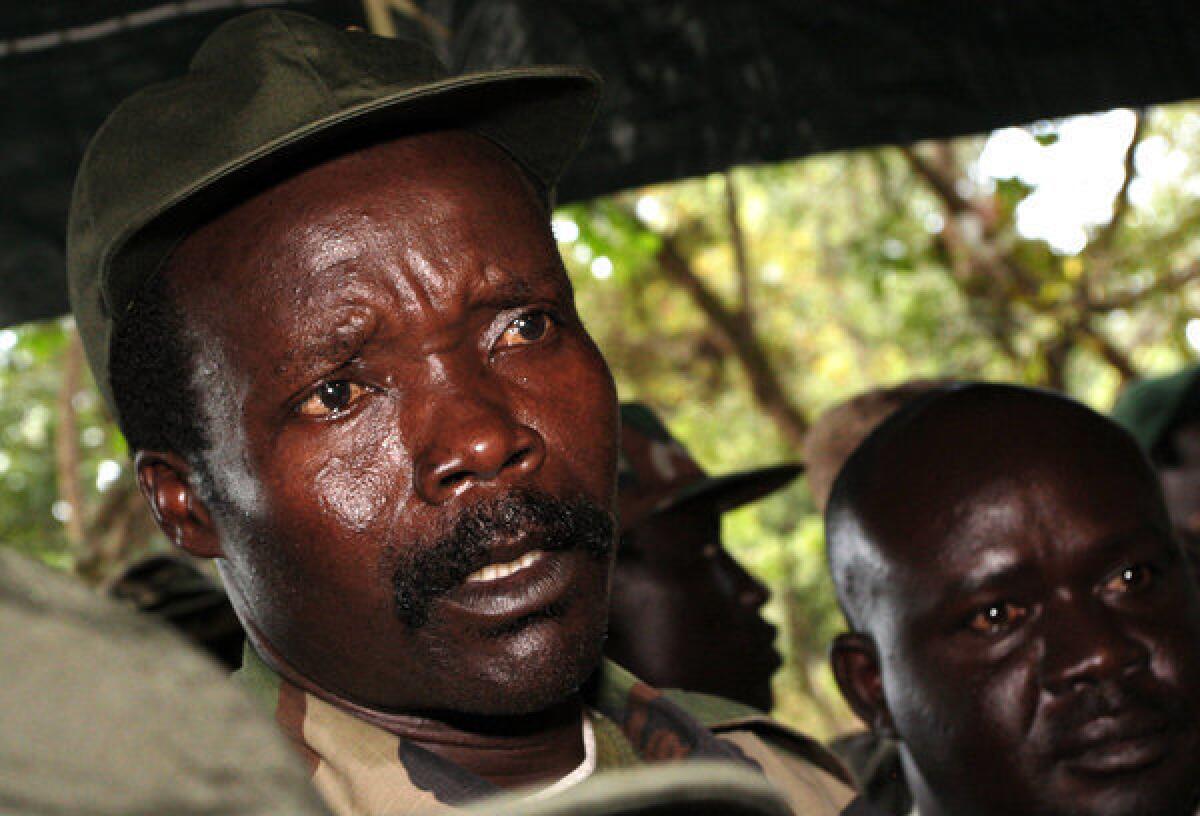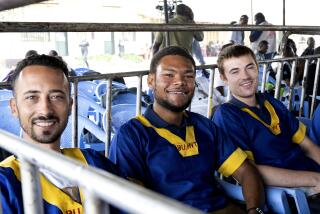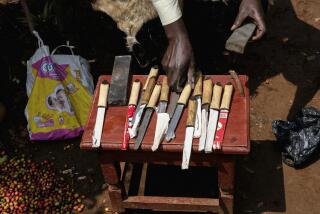Savagery, witchcraft hold Africans in sway of warlord Kony

Despite unspeakable brutality committed over 25 years, Lord’s Resistance Army leader Joseph Kony continues to elude betrayal even by his victims.
He is hunted by thousands of African Union troops guided by U.S. special forces, yet few familiar with Kony’s history of murder, mutilation, kidnapping, sexual enslavement and child-soldier recruitment see much immediate prospect for his arrest and trial on war crimes charges.
Kony’s loyalists may have dwindled to as few as 200. Yet even as they remain scattered across remote stretches of the Democratic Republic of Congo, South Sudan and the Central African Republic, his ragtag, poorly armed followers and their young captives survive by their wits in a sheltering jungle, ignored by indifferent governments and able to maintain a reign of terror.
Why the well-armed and -equipped foreign troops have been unable to snuff out what little is left of a militia that once numbered in the tens of thousands is explained by the complexities of geography, politics and poverty, historians and human rights advocates say.
Kony, 51, wields power over disgruntled members of the Acholi tribe of his native Uganda with a mixture of blood-curdling savagery and claims of being a spiritual medium protecting followers from witches and evil spirits. He has fostered a cult of personality, casting himself as a deity whom Africans confront at their own peril.
Local activists frustrated by Kony’s resilience have been struggling to devise ways of protecting themselves. Abbe Benoit Kinalegu, head of the Roman Catholic Church’s Commission for Justice and Peace in the remote town of Dungu in Congo, has won acclaim among rights advocates for his attempts to document atrocities and rehabilitate escaped victims.
“The kidnapped children were often made to kill or mutilate their own parents and have no place to go even when they are free,” Kinalegu said of those found wandering in the forests and jungles.
Kinalegu helped develop an “early-warning system” by which villagers can relay signs of impending attacks by radios distributed to the remote reaches of Garamba National Park in northeastern Congo. The rebel refuge is the size of France and impenetrable except on foot or by small aircraft, the activist priest said, allowing the militants to relocate and evade capture even when they are spotted.
While the few Congolese bold enough to stand up to the surviving Kony henchmen are encouraged by the arrival of 100 U.S. special forces troops and the first half of a 5,000-strong contingent of soldiers from the African Union, they hold out slim hope of eradicating the Lord’s Resistance Army because of its power to intimidate, Kinalegu said.
The U.S. troops’ mission was defined by Congress more than a year ago as advisory. Aerial surveillance capabilities have been added and other ways of bolstering assistance are being considered, Pentagon spokesman Lt. Col. James O. Gregory said.
“Since this deployment began, the U.S. military advisors have had a clear goal: to enhance the capacity of local forces to succeed in their mission to end the threat posed by the LRA,” Gregory said.
The foreign forces hunting Kony have dropped leaflets appealing to his followers to defect and help bring him to justice, said Ida Sawyer of Human Rights Watch. But Sawyer, a researcher and advocate who has been monitoring violence from the Congolese capital, Kinshasa, for the last five years, said lagging review of the intelligence gathered by the U.S. flyovers means Kony’s forces can decamp before any missions to seize them can be launched.
Complicating the effort to contain Kony, who in 2005 became the first war crimes suspect indicted by the International Criminal Court in The Hague, is the emergence of other guerrilla factions like the M23 rebel movement in eastern Congo, Sawyer said. M23, named for a shaky March 23, 2009, peace accord signed between Congolese rebel factions, is led by another fugitive warlord, Bosco Ntaganda, known among his followers as “the Terminator.”
John Campbell, senior fellow for Africa policy studies at the Council on Foreign Relations, ties the survival of Kony and his shrinking army of machete-wielding followers to the guerrilla group’s origins in African mysticism.
“This is an area prone to believe in witchcraft. Underneath a thin layer of Christianity you have a lot of indigenous religion. The Lord’s Resistance Army provides some protection against diabolical forces,” Campbell said of the population’s apparent reluctance to help the international military forces capture their oppressor.
Though he predicts that Kony will eventually be brought to justice because of his notoriety, Campbell said even his capture would do little to resolve the seething ethnic, political and religious tensions that have nursed decades of violent conflict in Central Africa.
“The scary thought,” said Campbell, a 32-year veteran of the U.S. Foreign Service, “is that once he is caught and the Lord’s Resistance Army is dissolved, is it to be replaced by something else like it?”
ALSO:
Russia levies rare punishment for poaching tigers
Asian cities hit harder by increasing disasters, experts warn
Women and media at China’s 18th Communist Party congress
A foreign correspondent for 25 years, Carol J. Williams traveled to and reported from more than 80 countries in Europe, Asia, the Middle East and Latin America.
More to Read
Sign up for Essential California
The most important California stories and recommendations in your inbox every morning.
You may occasionally receive promotional content from the Los Angeles Times.











